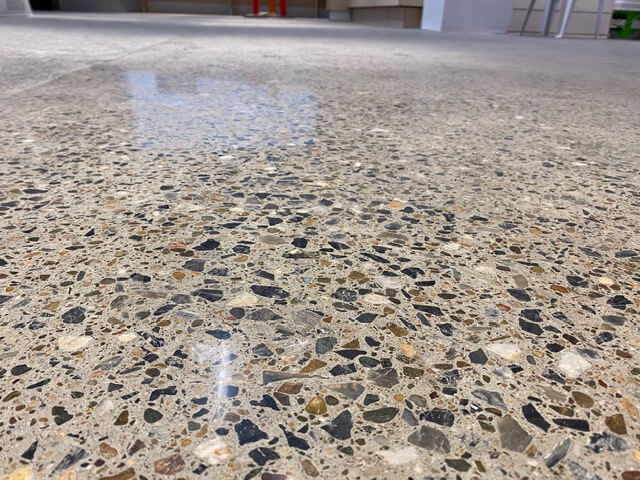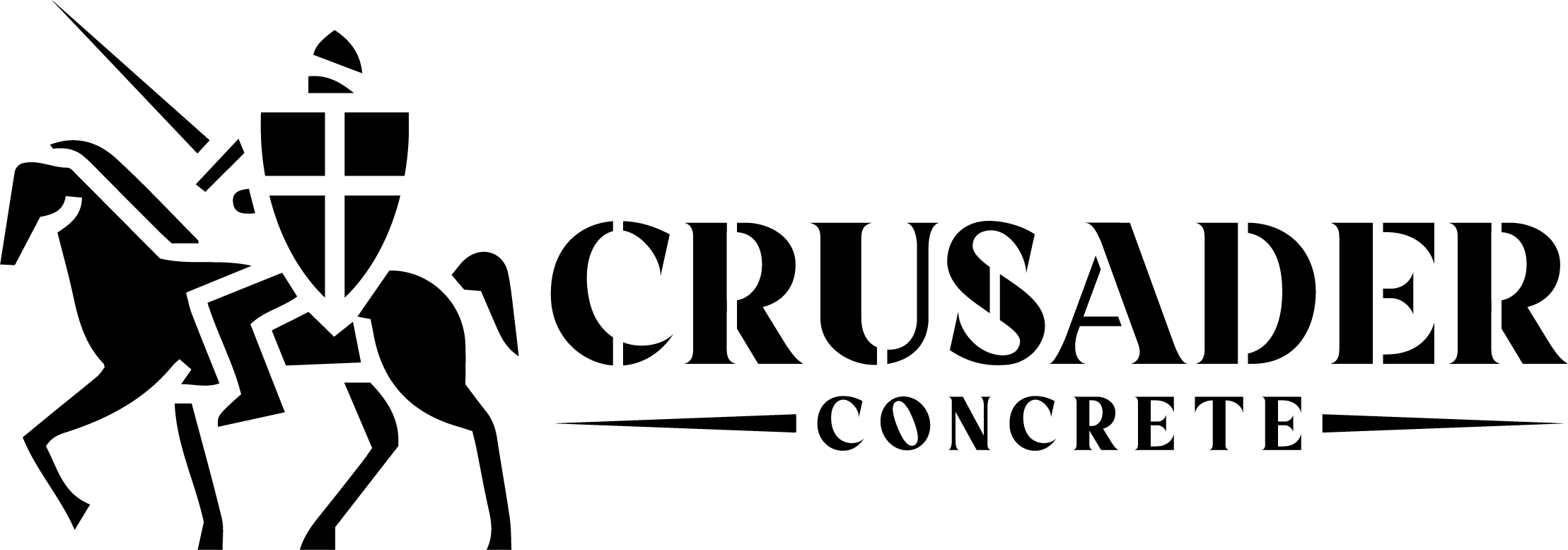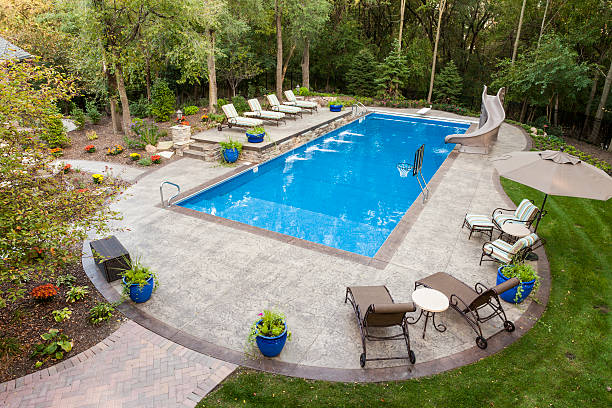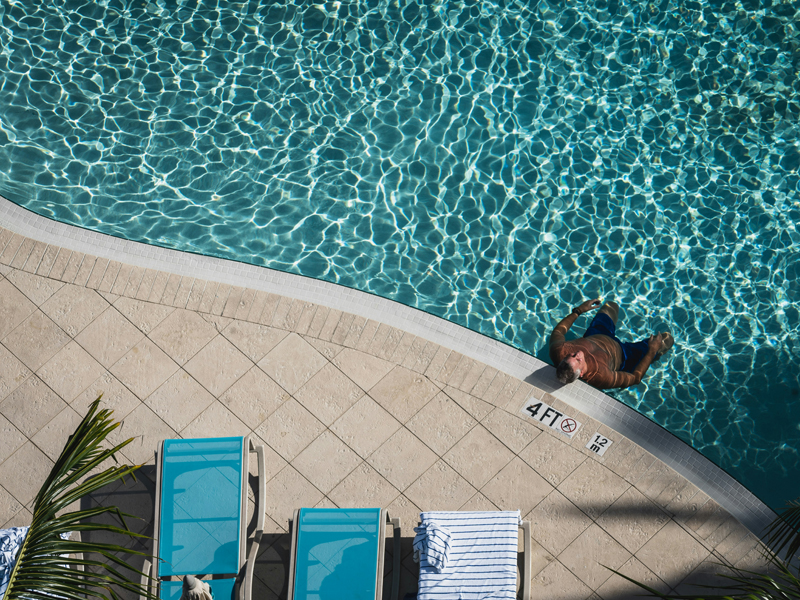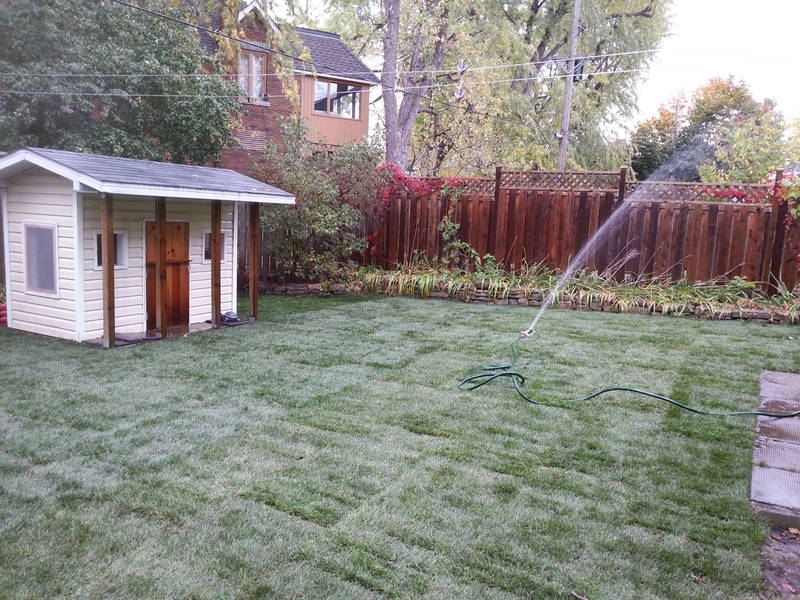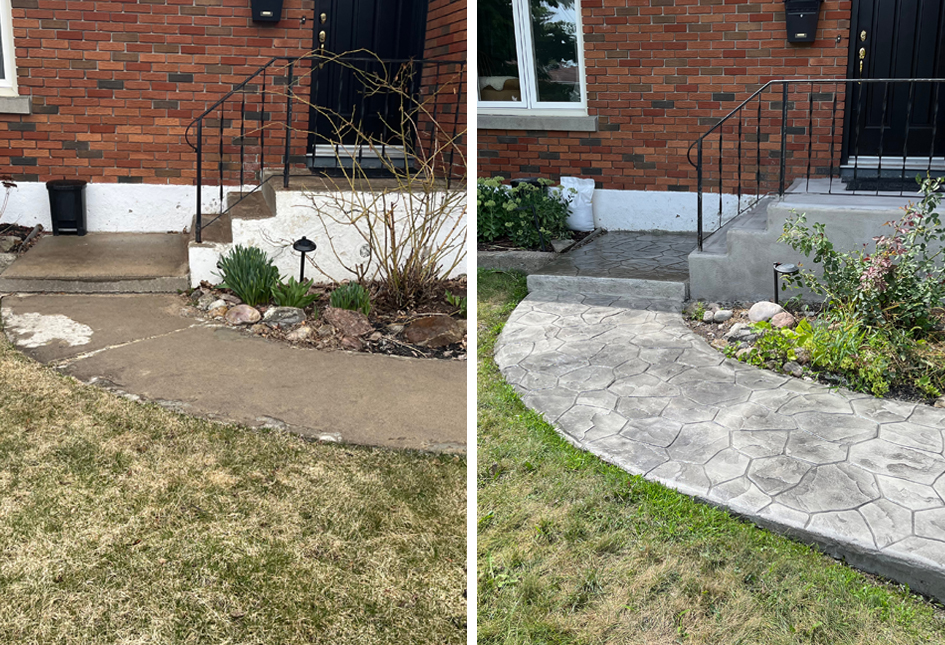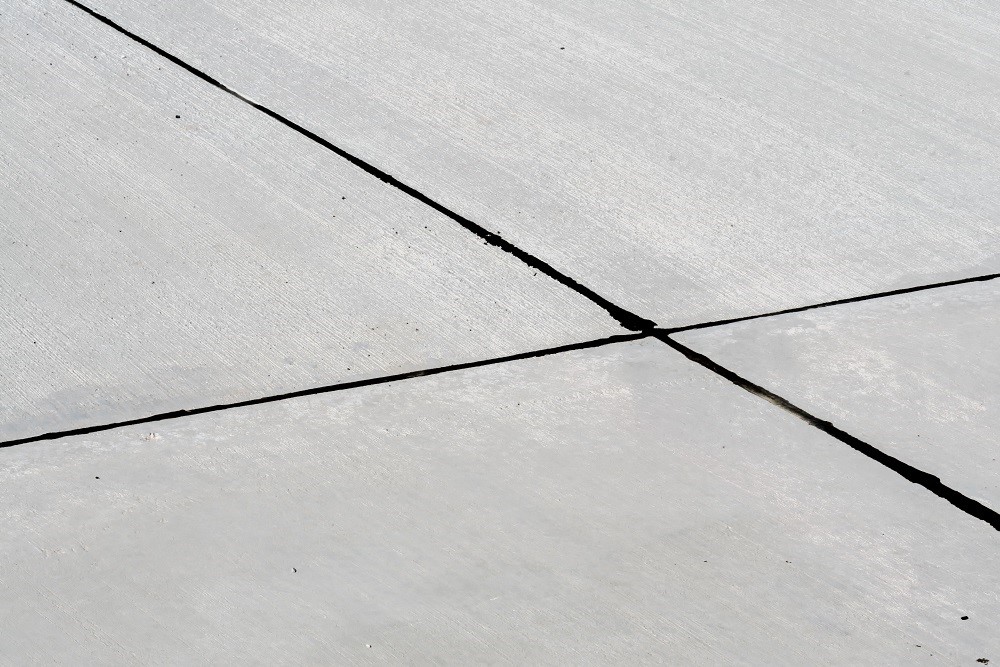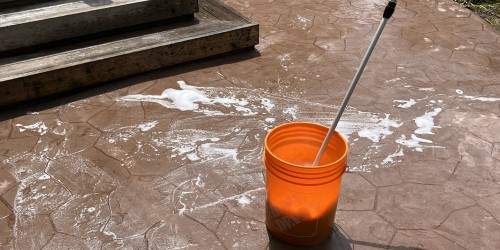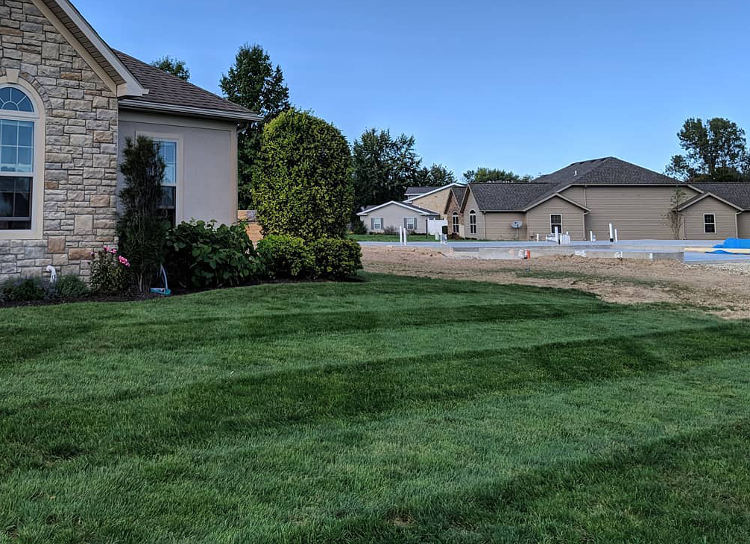Welcome to our guide on concrete finishes! Concrete can be more than utilitarian; it can be stunning. Here, we'll explore six types: smooth, broom, spin trowel, stamped, exposed aggregate, and grinding and polishing. Each offers unique benefits for both home and commercial settings. Let's see how they can enhance your next project.
1. Smooth
A smooth finish otherwise known as trowel finish is a smooth untextured look commonly seen in garage, basement and warehouse floors. This look can be achieved by hand or machine after the concrete has been given some time to harden up.
Hand Trowelling
The hand finishing technique is done by dragging a magnesium or steel trowel across the surface with the finishers moving across the concrete on knee boards.
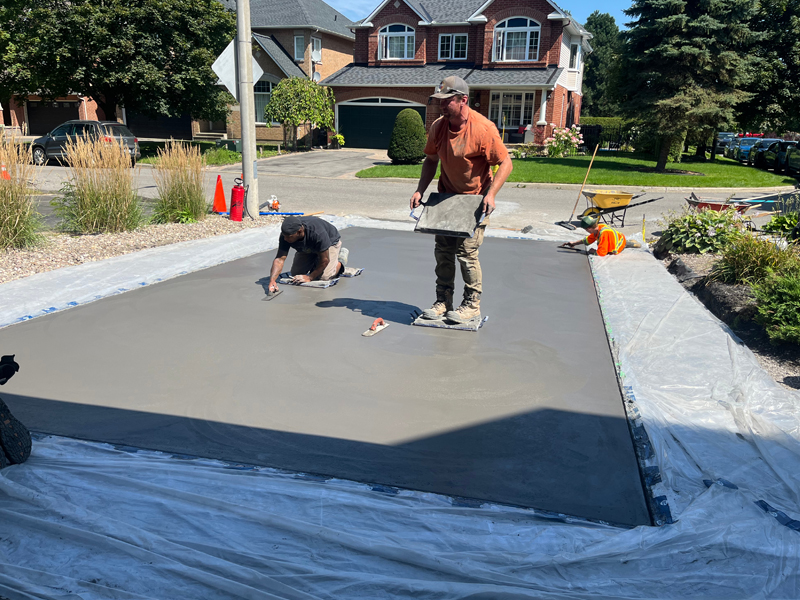
Power Trowelling
The power trowelling technique utilizes walk-behind or sit-on troweling machines equipped with rotating troweling blades resembling a fan. The operator guides the machine across the hardened but still creamy surface.
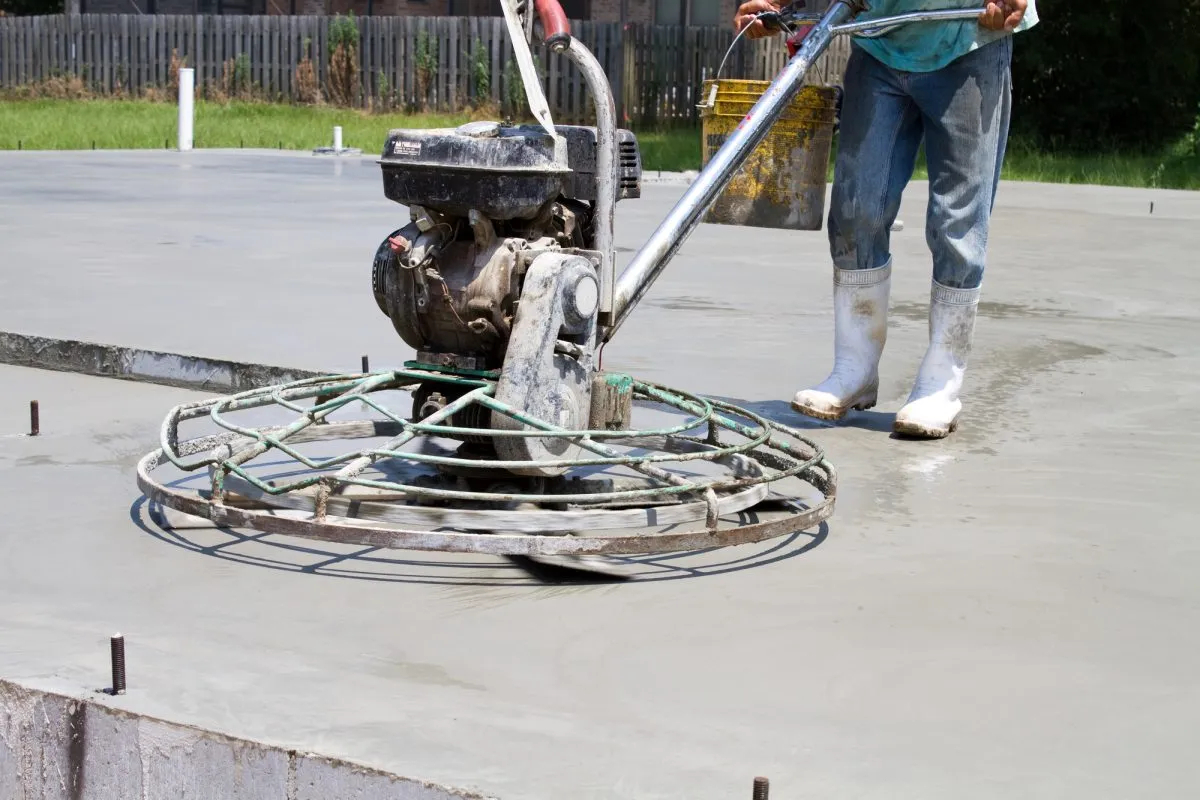
2. Broom
Broom finished concrete is created by dragging a concrete finishing broom across the surface of smoothed concrete. Broom finished concrete is commonly seen on sidewalks, walkways, driveways and other outdoor surfaces that see a lot of walking traffic requiring texture to prevent slipping.
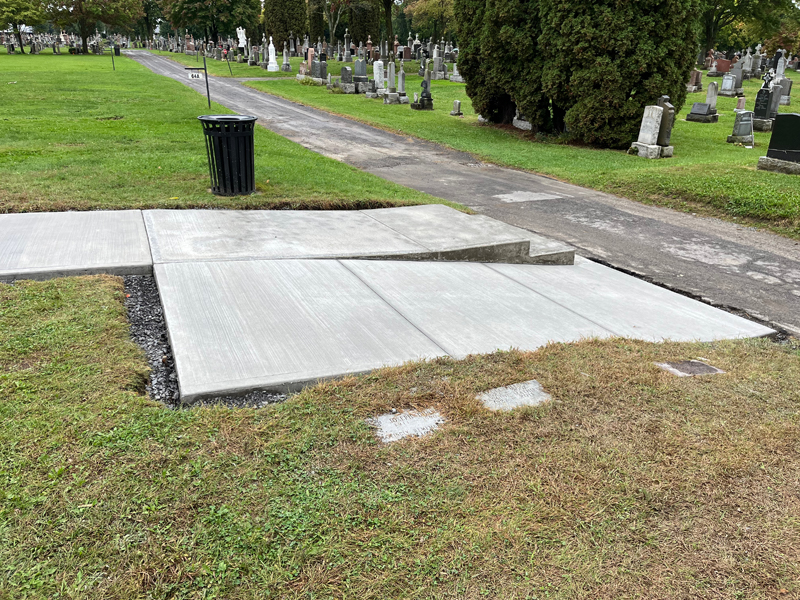
3. Spin Trowel
"Spin trowel finishing" or "swirl finishing," where a concrete finisher uses a hand-held trowel to create a decorative half-circle pattern across the surface of the concrete. The process begins after the concrete has been leveled and floated to a point where it's still pliable but not overly wet. The finisher positions the trowel at the edge of the slab and with a swift, circular motion, drags it to create a semi-circular or swirl pattern. This motion is repeated across the entire surface, overlapping each arc to ensure complete coverage and uniformity. The result is not just an aesthetically pleasing pattern but also a textured surface that provides slip resistance, making it ideal for walkways, patios, or any area where safety and beauty are desired. The swirls help to disguise minor imperfections in the concrete while adding an element of design that can mimic natural stone or other decorative finishes, enhancing both the look and functionality of the concrete surface.
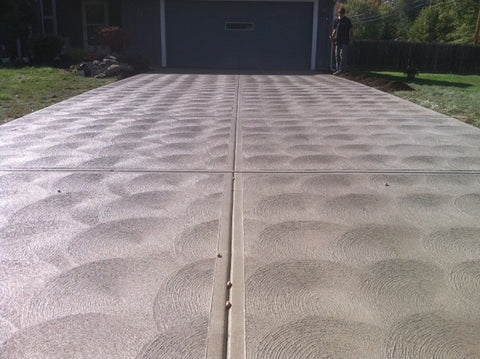
4. Stamped
Stamped concrete is a decorative concrete finishing technique where freshly poured concrete is textured and colored to mimic other materials like stone, brick, slate, or even wood. The process starts with pouring the concrete and allowing it to reach the right level of setting where it can hold an impression. Once at this point, a release agent is applied to prevent the stamps from sticking to the concrete. Then, textured mats or stamps are pressed into the concrete surface while it's still malleable. These stamps can vary from simple geometric patterns to intricate designs, providing a vast range of aesthetic options. Color can be introduced either through integral color mixed into the concrete before pouring, or by broadcasting dry shake hardeners on the surface, or even by using stains or dyes after the concrete has cured. The technique not only adds visual appeal but also allows for customization in terms of color, texture, and pattern, making it a popular choice for patios, driveways, pool decks, and interior floors where both functionality and decorative elements are desired. After stamping, the concrete is left to cure, and then any necessary sealing is done to protect the surface and enhance the color and texture.
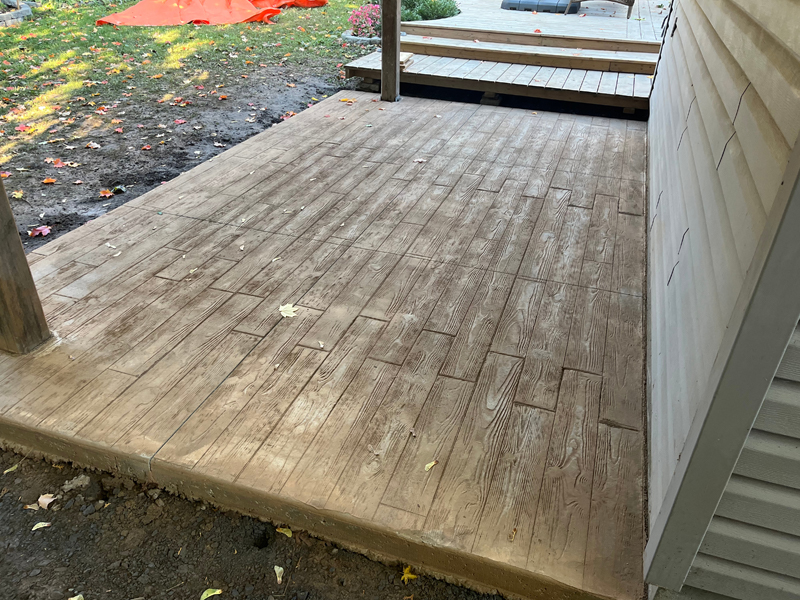
5. Exposed Aggregate
Exposed aggregate concrete finishing reveals the natural beauty of aggregates (like gravel, pebbles, or crushed stone) by removing the top layer of cement paste. The process starts with selecting a mix of decorative aggregates for aesthetic appeal. After pouring and leveling the concrete, it sets until firm but not fully cured, where a retarder might be applied to slow curing of the top layer. Once the concrete can support foot traffic, the surface layer is removed mechanically or by hand, exposing the aggregates. This technique provides a slip-resistant, visually appealing surface that blends well with outdoor settings. After exposure, sealing the concrete enhances color, protects the aggregates, and extends the surface's life, suitable for driveways, walkways, patios, and pool decks where both functionality and aesthetics are key.
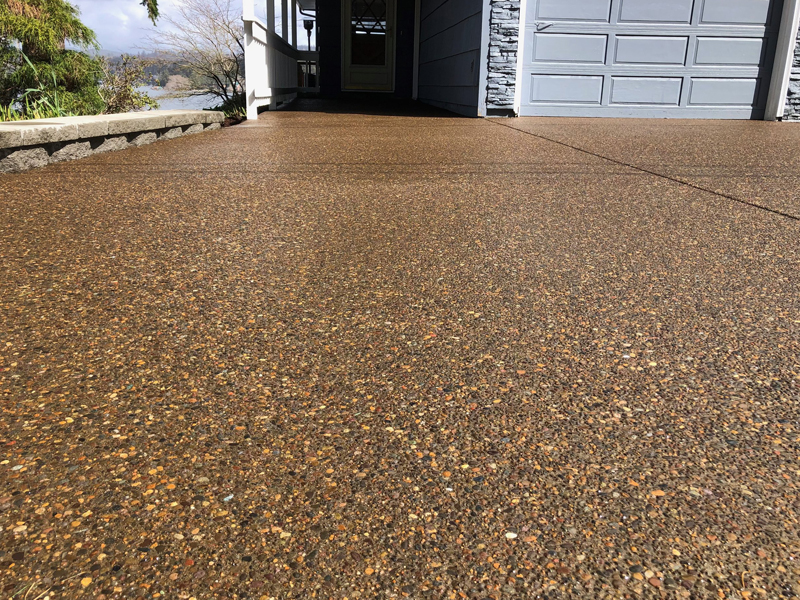
6. Grinding & Polishing
Grinding and polishing concrete involves multiple steps to transform it into a durable, glossy surface. Initially, grinding with coarse diamond abrasives removes imperfections and prepares the concrete for color or strength enhancement. Subsequent polishing with progressively finer grits achieves the desired sheen, from satin to high gloss. Densifiers may be applied to increase concrete's density and durability. This technique not only improves aesthetics but also enhances resistance to wear, stains, and moisture, suitable for various settings. A sealant is applied to maintain the polish and ease maintenance.
